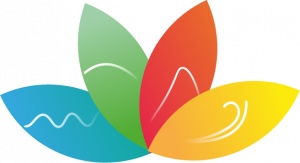Lesson Plans
The equatorial jungle
La Jungle équatoriale
- France
- Earth
- B1
Warming Up
- Which words come to your mind when you look at this painting? Do you recognise the artist?
- How many animals do you see? Can you recognise what species they belong to?
- Do you find this painting realistic?
Vocabulary
Cultural Heritage Background
“Naïve art” is usually defined as visual art created by a person who does not have the formal education and training that a professional artist receives (in anatomy, art history, technique, perspective, vision). When this aesthetic is imitated by a trained artist, the result is sometimes called “primitivism”, “pseudo-naïve art”, or faux naïve art.
Naïve art is recognised and often imitated for its childlike simplicity and openness. Paintings of this type have a flat style with a rudimentary expression of perspective. A particularly influential painter of naïve art was Henri Rousseau (1844–1910), a French Post-Impressionist who was discovered by Pablo Picasso.
Answer the following questions:
Do you prefer naïve art or classical art?
Listening
Listen to the audio fragment
German art collector and critic Wilhelm Uhde is known as the principal organiser of the first naïve art exhibition, which took place in Paris in 1928. The participants were Henri Rousseau, André Bauchant, Camille Bombois, Séraphine Louis and Louis Vivin, known collectively as the Sacred Heart painters.

Reading the story
“The Equatorial Jungle” was painted by Henri Rousseau in 1909. This painter, unlike most artists of his time, never attended art school. He learned to paint by observing children’s books, plants and taxidermied wild animals. So he was lacking in technique, but he compensated for this with his imagination. The result is a dreamlike, almost childlike atmosphere:


His art is at the beginning of the movement of naïve art. He wanted to be recognised as a great painter. However, the classical aesthetic codes of the time considered his art to be childish. But, he was well liked in the avant-garde movement. He was friends with great artists like Pablo Picasso, Guillaume Apollinaire, Toulouse-Lautrec. Moreover, he influenced the emergence of the Surrealist movement.
In “The Equatorial Jungle”, the earth is everywhere. Jungles are known to be the densest forests and absorb every available light. Thus we see almost only vegetation, which is present in a wide variety of species. Jungles are the most biologically diverse places on the planet, and are often studied by scientists. There are also many types of fauna, but large animals are hard to find in a place where flora takes up all the space. They usually live in the tops of the trees.
Reading Comprehension
React to the statements about the story read.
Grammar
When we want to make a prediction, we often use will + infinitive.
When we want to make a prediction based on present evidence, we often use be going to + infinitive.
Read about the rules for direct and indirect speech here. https://eslgrammar.org/direct-and-indirect-speech/
Additional activities
- Books
Michelle Markel, Amanda Hall, The Fantastic Jungles of Henri Rousseau, ed. Eerdmans Books for Young Readers, 2012. https://www.eerdmans.com/Products/5523/the-fantastic-jungles-of-henri-rousseau.aspx
Read more about the so-called “Sacred Heart painters” (Henri Rousseau, André Bauchant, Camille Bombois, Séraphine Louis and Louis Vivin).
- Videos
Short video about Henri Rousseau: https://www.youtube.com/watch?v=w15zPkNw10A
Long videos: The Power of Art (documentary about Rousseau) https://www.youtube.com/watch?v=UjYbs1EbJfU
His life and painting https://www.youtube.com/watch?v=ZUKjXvkXgKI
Extra resources for learners
- Links to 4 Elements in Arts Resource Library
https://www.4-elements.eu/en/inarts
- Links to websites :
